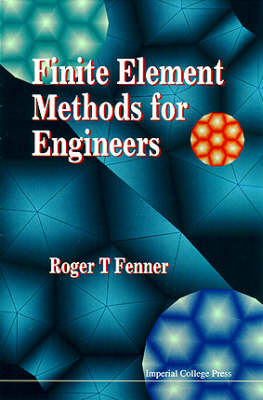
Finite Element Methods For Engineers
Seiten
1996
|
New edition
Imperial College Press (Verlag)
978-1-86094-095-8 (ISBN)
Imperial College Press (Verlag)
978-1-86094-095-8 (ISBN)
This revised text serves as an introduction to finite element methods. Its main emphasis is on the simplest methods suitable for solving two-dimensional continuum mechanics problems, particularly those encountered in stress analysis, fluid mechanics and heat transfer.
Professor Fenner's definitive text is now back in print, with added corrections. It serves as an introduction to finite element methods for engineering undergraduates and other students at an equivalent level. Postgraduate and practising engineers will also find it useful if they are comparatively new to finite element methods.The main emphasis is on the simplest methods suitable for solving two-dimensional continuum mechanics problems, particularly those encountered in the fields of stress analysis, fluid mechanics and heat transfer. Complete FORTRAN programs are presented, described and discussed in detail, and several practical case studies serve to illustrate the methods developed in the book.Finite element methods are compared and contrasted with finite difference methods, and throughout the level of computer programming, continuum mechanics, numerical analysis, matrix algebra and other mathematics employed corresponds to that normally covered in undergraduate engineering courses.
Professor Fenner's definitive text is now back in print, with added corrections. It serves as an introduction to finite element methods for engineering undergraduates and other students at an equivalent level. Postgraduate and practising engineers will also find it useful if they are comparatively new to finite element methods.The main emphasis is on the simplest methods suitable for solving two-dimensional continuum mechanics problems, particularly those encountered in the fields of stress analysis, fluid mechanics and heat transfer. Complete FORTRAN programs are presented, described and discussed in detail, and several practical case studies serve to illustrate the methods developed in the book.Finite element methods are compared and contrasted with finite difference methods, and throughout the level of computer programming, continuum mechanics, numerical analysis, matrix algebra and other mathematics employed corresponds to that normally covered in undergraduate engineering courses.
Introduction and structural analysis; continuum mechanics problems; finite element analysis of harmonic problems; finite element meshes; some harmonic problems; finite element analysis of biharmonic problems; some biharmonic problems; further applications.
| Verlagsort | London |
|---|---|
| Sprache | englisch |
| Themenwelt | Mathematik / Informatik ► Informatik ► Theorie / Studium |
| Mathematik / Informatik ► Mathematik ► Angewandte Mathematik | |
| Naturwissenschaften ► Physik / Astronomie ► Quantenphysik | |
| Naturwissenschaften ► Physik / Astronomie ► Strömungsmechanik | |
| Technik ► Maschinenbau | |
| ISBN-10 | 1-86094-095-1 / 1860940951 |
| ISBN-13 | 978-1-86094-095-8 / 9781860940958 |
| Zustand | Neuware |
| Haben Sie eine Frage zum Produkt? |
Mehr entdecken
aus dem Bereich
aus dem Bereich
was jeder über Informatik wissen sollte
Buch | Softcover (2024)
Springer Vieweg (Verlag)
37,99 €
Grundlagen – Anwendungen – Perspektiven
Buch | Softcover (2022)
Springer Vieweg (Verlag)
34,99 €
Eine Einführung in die Systemtheorie
Buch | Softcover (2022)
UTB (Verlag)
25,00 €


